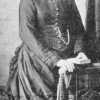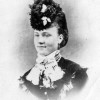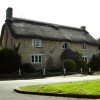There is a surprising number of similarities between the story of the Tolpuddle Martyrs, from the 1830’s and that of the Monmouth Rebellion 150 years earlier. Both are partly set in the Dorset county town of Dorchester, where the heavy hand of the law came down; in both cases the ruling classes were desperate to keep their hold on the lower orders; and there was a strong religious element in both risings.
West Country peasantry was involved in both clashes; and transportation – sending the convicted to the other side of the earth – was still seen as a good way of dealing with malefactors.
There, however, the similarities end, for the Tolpuddle Martyrs were just six in number. They were all sentenced to be transported, as it transpired to Australia and Tasmania, for seven years. In one stroke the farms in the Piddle Valley, which meanders picturesquely towards the English Channel, lost much valuable labour. Early one freezing February morning the men were asked by the local constable to accompany him to Dorchester, walking the whole six miles – and they did not return.
Their crime was simply taking part in an illegal oath administration ceremony in one of the cottages. There had been rick burnings in England’s Southwest a few years earlier and the ‘Captain Swing’ riots were notorious across the country. The farmers themselves were in a fix: if they were forced to pay higher wages they could not pay higher rents to landowners.
The Tolpuddle labourers were faced with having to take home only 6s. a week to keep their families and homes, and this was putting them in a rebellious mood. However, the leading County magistrate, James Frampton of Moreton had been in Paris during the French Revolution and colluded with the Home Secretary, Lord Melbourne, about the problem in neighbouring Tolpuddle.
The heaviest punishment possible for mutiny involving an oath (actually a Royal Navy offence) was transportation. Of the six ‘mutineers’ George Loveless, the leader, went to Tasmania and the others to New South Wales.
The tiny Methodist chapel at Tolpuddle (succeeded by another Methodist church further out of the village) was denuded of keen members, for five of the six martyrs belonged there
If you go to Tolpuddle, perhaps during the great annual trades’ union-supported rally held each July, look at the Thomas Standfield cottage on the main road, with its plaque. Think of him in his fifties in the Aussie bush, sleeping out in a ‘watch-box’ and looking after sheep – a few months after leaving his Dorset farm. It sounds almost idyllic.
But his son John, who was later to become a mayor in the London area of Ontario, Canada, to which five of the martyrs eventually emigrated, described his condition: covered in sores, his home a ‘shed’ six feet by 18 inches, and having to walk four miles by night for his rations.
The Tolpuddle men, described as ‘politicals’, got extra harsh treatment from their masters. Yet it has been said they helped shape Australia. However, whether they had any offspring there is open to doubt. All the martyrs except George Loveless, who was sick at the time, had sailed from Plymouth, in the next county west from Dorset, on April 11, 1834 after living aboard prison hulks at Portsmouth. On arrival at Sydney they were marched through the streets to the barracks where they were assigned to their masters. Some masters were kinder than others. Some were brutal.
James Loveless had to walk for 14 days to reach his station, or farm, near the Victoria State border. George Loveless worked on a chained road gang, slept on a stone floor and for a week was in irons, purely for what he was supposed to have done in England. Stories were rife about the martyrs’ supposed yet purely fictitious misdemeanours 12,000 miles away.
The men were pardoned in March 1838, after pressure by unionists, the general public and Parliamentarians in the old country. Only one, James Hammett, returned to live in Tolpuddle as a master builder, and he is buried in the Church of England graveyard, under a finely carved headstone. The references to Christianity are important, for the Loveless brothers have been described by a historian as “Methodist trade union pioneers”, although there is no evidence that they ‘spoke politics’ from the pulpit.
On return to Britain, the men were given tenant farms in Essex. The farms were provided and stocked by the Dorchester Labourers’ Farm Tribute and the London Dorchester Committee. Some of the men got involved in causes such as the Chartist movement and the lot of the agricultural workers. However, encountering a hostile attitude, they all, except James Hammett, booked tickets for New York in the mid-1840’s, travelling by sea, train, lake ferry and ox-cart to their new land which they were to help found. London, Ontario today is a growing industrial city.
George Loveless held Bible classes in the home he built for himself and his wife (their daughter died on the Atlantic crossing). He helped to build the first church in the London district of Siloam (the Pool of Siloam is mentioned in the Gospel of John). Brother James became caretaker of the church. On the gravestone of George and wife Elisabeth is this inscription: “ These are they who came out of great tribulation and have washed their robes and made them white in the Blood of the Lamb”.
James Brine, who married a Standfield, farmed on the shores of Lake Huron and at St.Mary’s. These men, supported heroically by their womenfolk, were not founders but true pioneers of the trade unions, for they were a powerful incentive and that remains true today. The working man and those who lead the Labour movement owe them much.
In Canada a memorial park was opened in London, Ontario in 1969. The sycamore tree where the martyrs met on Tolpuddle Green is growing strongly, the museum tells the story in banners and hi-tech videos, the fine row of cottages built by the trade union movement houses six tenantsIt is all a far cry from when, after a visit from two delegates of the Grand National Consolidated Trades Unions, an organisation led by Robert Owen, the Friendly Society of Agricultural Labourers was formed in Tolpuddle. Trade unionism had come to a quiet Dorset village in October 1833, but the society foundered because a spy who had taken the oath witnessed against the six. It meant that at the Dorchester Assizes, in March 1834, when the sensational sentence was announced, Dorset had new martyrs. These days, the Old Crown Court of the Shire Hall, where the trial took place, is open to visitors in the summer.
After his conviction, George Loveless threw to the crowd outside as he was leaving the court, a paper with two verses, beginning “God is our Guide!” and ending “We will, we will, we will overcome!”



